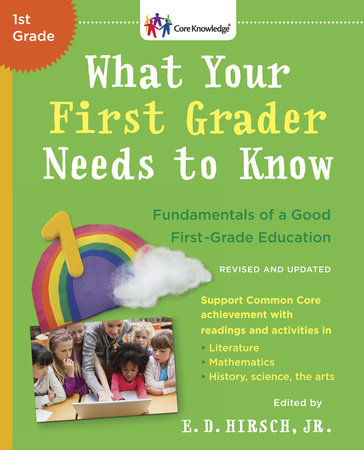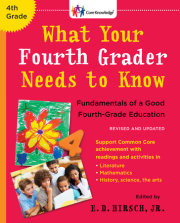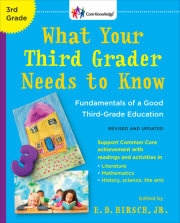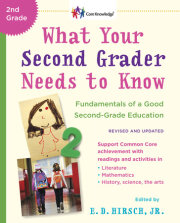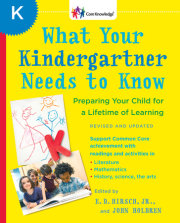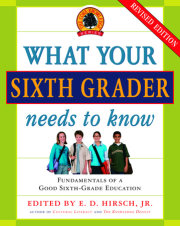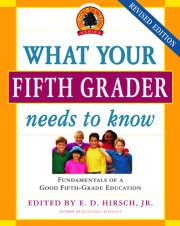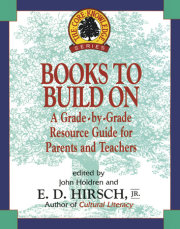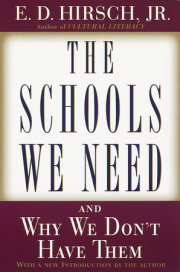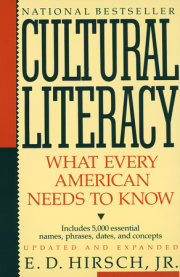Learning to Read Literate adults are constantly interacting with text in one form or another. Think about the reading and writing you do on any given day. Perhaps you start the morning with a glance at a newspaper or headlines on your tablet. You might hastily scribblea note for your daughter’s lunch bag. Billboards and road signs compete for your attention as you drive around town. At work there are memos, reports, and email to read and write. Your child’s knapsack carries home forms to fill out and announcements from hisschool or teacher. There are recipes to be read, bills to be paid, and account statements to be examined. When time allows, perhaps you end the day with a novel, a magazine, or Facebook posts from friends and family. Each of these activities and countless others involve reading and writing. But we rarely think about our ability to write or make sense of printed words. It feels like something we do without thinking about it at all. In reality, our ability to make senseof the printed word is one of our greatest intellectual achievements. Most of us learn to speak and listen naturally, without formal instruction. But reading and writing are different. There’s nothing at all natural about acquiring these abilities. Reading Is Not a Skill Most of us think learning to read is like learning to ride a bike. It’s a skill we acquire as children and never lose. Moreover, riding a bike is also a transferable skill. Once you learn how, you can safely ride almost any bike. Surely it’s the same withreading: Some of us may read faster or slower than others, but reading is reading is reading. Once you learn how to read, you can read anything, right? Unfortunately, it’s not that simple. Your ability to translate written symbols into sounds—what reading experts call decoding—is a transferable skill. This explains why you can “read” nonsense words, even if you’ve never seen them before, such as thosefound in the famous Lewis Carroll poem “Jabberwocky.” ’Twas brillig, and the slithy toves Did gyre and gimble in the wabe: All mimsy were the borogoves, And the mome raths outgrabe. Few of us would disagree on how to pronounce words such as “brillig” and “mimsy,” even though they don’t exist. But there’s more to reading than simply decoding the words on a page. Reading is about comprehension—your ability to make meaning of writtenwords. If we can’t make sense of the words on the page, we really cannot be said to be “reading.” Unlike decoding, reading comprehension is not a transferable skill at all. It’s the result of years and years of vocabulary growth and of building up a store ofknowledge about the world, which helps you make sense of what you read. Reading about a subject that you know little about can be awkward and disorienting. For example, in his book The Making of Americans, Core Knowledge founder E. D. Hirsch describes readingthis account of a cricket match in a British newspaper: Thus, as the final day dawned and a near capacity crowd lustily cheered every run Australia mustered, much depended on Ponting and the new wizard of Oz, Mike Hussey, the two overnight batsmen. But this duo perished either side of lunch—the latter a littleunfortunate to be adjudged leg-before—and with Andrew Symonds, too, being shown the dreaded finger off an inside edge, the inevitable beckoned, bar the pyrotechnics of Michael Clarke and the ninth wicket. You probably know nearly all the words in this passage, but it’s nearly impossible to understand what the writer is trying to say. Even common words such as “lunch” and “overnight” suddenly seem awkward and strange. Knowing that this is an account of acricket match played by a team from Australia doesn’t help. Your lack of knowledge about how the game is played keeps you from understanding what the words mean. This might strike you as an extreme example, but think of how it feels when you try to make senseof directions for installing an operating system on your computer or struggle to understand a product warranty. Your rate of reading slows. You read and reread, struggling to understand. Why is this so hard? Isn’t reading like riding a bike? Your ability to make sense of what you read depends heavily on your prior knowledge—the stuff you already know. “Prior knowledge is vital to comprehension, because writers omit information,” notes University of Virginia cognitive scientist Daniel Willingham.Suppose you read, “He just got a new puppy. His landlord is angry.” According to Willingham, you easily understand the logical connection between those sentences because you have prior knowledge of puppies (they aren’t housebroken), carpets (urine stains them),and landlords (they are protective of their property). But what if you didn’t know those things? You would be confused, and comprehension would break down. In short, it’s deeply misleading to think of reading as a “skill” at all. Reading is really a two-part process. The first part is decoding, which is a skill. The second part is comprehension, which depends almost entirely on vocabulary and background knowledge—youneed to know all the words. But, critically, you also need to know the things to which those words refer. And comprehension is most certainly not a skill. It’s the product of years and years of language growth and knowledge acquisition. The work of acquiringthat knowledge begins in earnest the day your child sets foot in kindergarten. The Knowledge Connection When we use this lens, it becomes clear that “knowing stuff” is critical to reading comprehension. Broad general knowledge is not merely nice to have. It’s essential if our children are to read widely with understanding. When children struggle with comprehension,it is usually not because they cannot “read.” More often, it’s because they lack the vocabulary and background knowledge to understand what the writer is trying to say. The Core Knowledge approach to reading is built on this essential understanding: Broad general reading ability correlates with broad general knowledge. If we want our children to become literate adults, they first must be explicitly taught to decode writingat a very early age. But their education must also furnish the broad, rich knowledge that educated Americans take for granted and assume others have as well. With a broad base of background knowledge, children will more easily become fully literate and readfluently and with comprehension. First Grade and Your Child Most of us do not take on the task of teaching our children how to read and write. We send our children off to school and encourage them to work hard and pay attention, and we assume their teachers are caring and competent. But you would not be holdingthis book in your hands if you were not deeply concerned about your child’s education. Thus, it’s useful to know what a good first-grade language arts program should look like. It’s worth paying careful attention, since the early days of formal education arecritical to the goal of helping your child become a proficient reader. Listening and Learning We tend to think of the three R’s—reading, writing, and arithmetic—as the foundations of a good, skills-based early childhood education. But to build this foundation, a good first grade classroom should probably be equally focused on the two L’s—listeningand learning. Think of the way language develops. Oral language development (speaking and listening) precedes written language development (reading and writing). Nearly all children learn to listen and speak long before they can read and write. Science confirms whatwe know from common sense: Children must be able to understand words before they can produce and use them independently—attention paid to listening and speaking will provide a solid foundation for later reading and writing. Listening comprehension also develops faster than reading comprehension and remains more advanced for far longer than you might expect: Your child’s ability to independently comprehend material on the printed page probably won’t catch up to his or herability to listen and understand the same material read out loud until the end of middle school. Our brains can do only so much at one time. When a child is learning to read, a significant amount of mental energy is devoted to decoding and reading with fluency.When she listens to text read out loud, attention is freed up to focus on the material itself. Thus, a good first grade classroom is one in which children are given lots of opportunities to be exposed to rich language by being read aloud to often. Most first-grade teachers read to their students. They know that small children love a good story. But the wisest teachers understand the importance of building vocabulary and background knowledge. They read nonfiction picture books and take advantageof a child’s curiosity to begin establishing background knowledge of the world—knowledge that is critical to mature reading comprehension. Read-alouds—both fiction and nonfiction—yield another important benefit: The language of books is richer and more formal than spoken English. By listening to stories or nonfiction selections read aloud, children can experience the complexities of writtenlanguage without expending cognitive energy on decoding. Helping young children develop the ability to listen to and understand written texts read aloud must be an integral part of any literacy initiative. A good first-grade teacher takes advantage of not just the natural benefits of listening and learning butalso the nuanced benefits provided when read-alouds are done in a coherent, systematic fashion. To achieve this, careful consideration should first be given to the selection of text read aloud, to ensure that the vocabulary and syntax presented are rich andcomplex. Furthermore, to make efficient use of instructional time, read-alouds must create a broad knowledge base while simultaneously boosting listening comprehension and language skills. To do this, the selection of read-alouds within a given grade leveland across grade levels should not be random but rather should be guided by a coherent, sequenced approach to building knowledge. Common Core State Standards and Your Child One of the most important changes in U.S. schools in the past few decades has been the creation of Common Core State Standards in English Language Arts and Math. By 2013, the standards describing what every child should know and be able to do had beenadopted by forty-five states. State tests to determine if children were meeting standards became a dominant feature of schooling in the era of the No Child Left Behind Act, which was passed in 2001. But fifty different states meant fifty different sets of standardsand assessments, making it difficult to know whether children were truly proficient at reading and math or whether states were just lowering the bar to create the illusion of student achievement. By establishing a single set of standards and common assessments, the Common Core State Standards were designed to ensure clarity and consistency across the country. In many early elementary school classrooms, the new standards may mean dramatic changesin teaching and learning. Here are a few of the changes you should expect to see in your child’s classroom and how you can support high-level learning at home. A Balance of Fiction and Nonfiction For more than twenty-five years, the Core Knowledge movement has been built on the understanding that a rich, knowledge-based curriculum isn’t merely “nice to have” but essential. A well-rounded curriculum is fundamental to reading comprehension, vocabularydevelopment, and language proficiency. Common Core State Standards (CCSS) reflect this understanding. Indeed, some have described CCSS as “adding nonfiction to the curriculum,” but what it really does is restores art, music, history, and literature to the curriculum. The same idea of domain-specific reading—that knowing a little bit (or, sometimes, a lot) about the subject you are studying is important in order to understand what you read about it—is also true about creativity, critical thinking, and problem solving.Indeed, nearly all of our most cherished goals for schooling are knowledge dependent. The more general knowledge you possess, the more fluid your thinking skills are. Yet how many times have we heard it said that schools are going to get away from teaching“mere facts” and focus on skills such as critical thinking, creativity, and problem solving? Unfortunately, it doesn’t work that way. Common Core State Standards rescue knowledge from those who would trivialize it or who simply don’t understand its fundamentalrole in human cognition. Common Core State Standards call for an even balance between fiction and nonfiction in the early grades. Elementary classrooms will always rely heavily on stories, poems, and imagination, but a child’s sense of wonder and awe is just as easily capturedby animals, castles, and flying machines. To your child, those are fun things to learn about, play with, and talk about. To a teacher, they build background knowledge. Both engagement and knowledge are essential ingredients, encouraging children to learn, explore,and grow. As a parent, you should be seeing your child exposed to a broad range of subjects in school. And you can support that at home by reading with your child on a wide variety of subjects—not just stories and fables—and encouraging his or her interestin real-world topics. Explore the World Through Reading and Listening Many teachers try to encourage young children to be independent readers by helping them to find books that are the right level for them to read on their own. There’s nothing wrong with that; however, that shouldn’t be the only opportunity that your childhas to interact with printed text in school, or even the most important one. Research tells us that children are able to understand text at a much higher level of sophistication when it’s read out loud. Indeed, a child’s ability to comprehend text read independentlygenerally doesn’t catch up to his ability to understand text read out loud until about the eighth grade. In the early grades, read-alouds are a valuable way to help children interact with written text well above their ability to read independently. Most teachers understand this, but the Common Core encourages teachers to use read-alouds not just for fictionalstories and poems but to build background knowledge and language skills across subject areas. If schools wait for a child to develop mature reading comprehension and read independently about nonfiction topics of interest, they’re wasting valuable time thatcould be spent establishing background knowledge and exposing children to rich language and content that will pay dividends for the rest of their reading lives. Under the Common Core State Standards, early childhood teachers are expected to devote significanttime during language arts to reading aloud on a wide range of nonfiction topics, not only stories and poems. One of the primary architects of the new standards put it eloquently: Common Core “restores elementary school teachers to their rightful place as guides to the world.” As parents, you can support this in the same way—open your children’s eyes to the worldaround them. And through books, videos, visits to museums, and travel where possible, expose them to the wonders of the world. A Focus on Evidence
Copyright © 2014 by E.D. Hirsch, Jr.. All rights reserved. No part of this excerpt may be reproduced or reprinted without permission in writing from the publisher.





